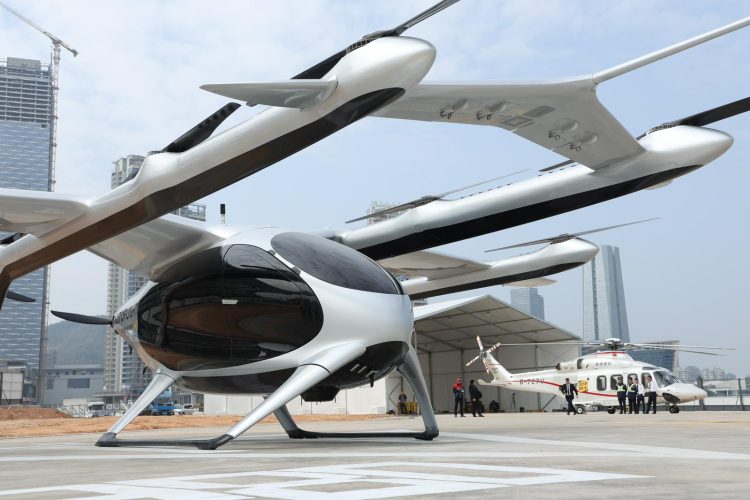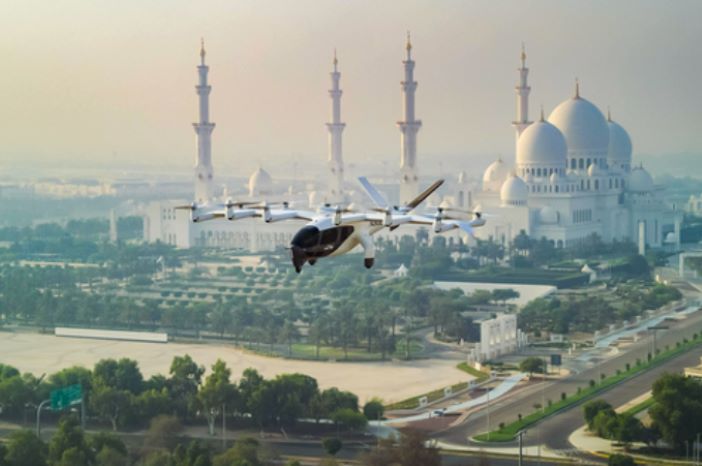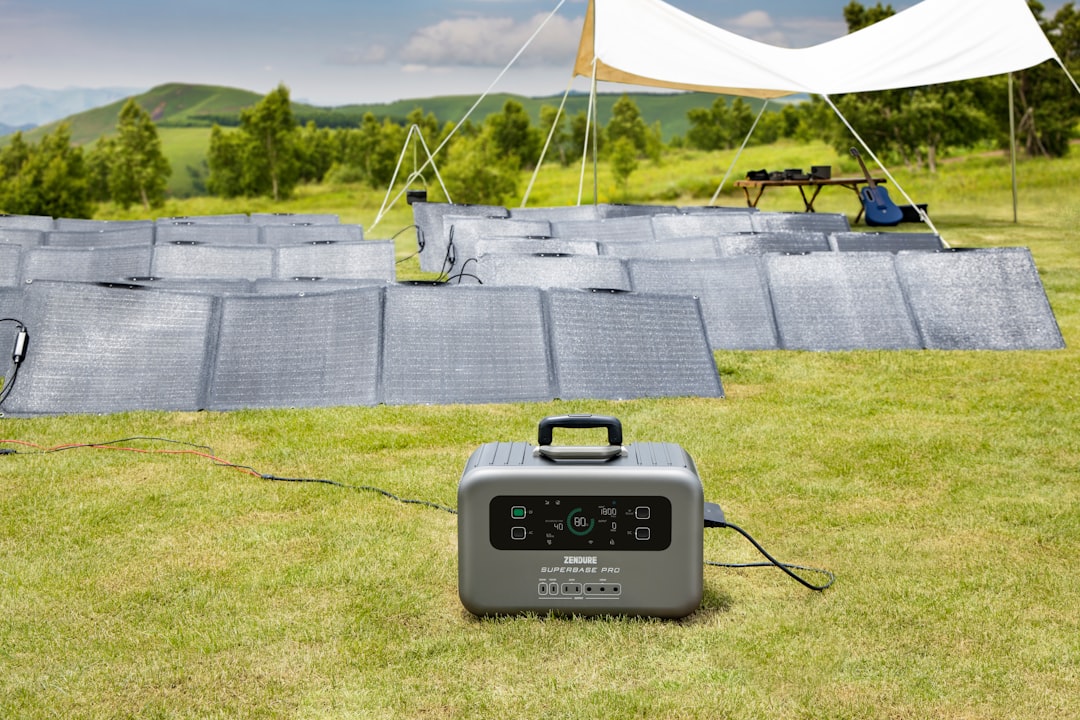The Unseen Barrier: Why Energy Storage is the Final Frontier for Autonomous Aviation
The world of autonomous systems is buzzing with advancements. Sophisticated AI algorithms, high-fidelity sensors, and powerful edge computing have given drones and electric vertical take-off and landing (eVTOL) aircraft unprecedented capabilities. From automated package delivery to urban air mobility, the software is rapidly maturing. Yet, a fundamental physical limitation holds back this revolution from reaching its full potential: the battery. For all the intelligence we can pack into a drone, its operational impact is ultimately dictated by how long it can stay in the air. This is the critical bottleneck where the latest in Drones & AI News intersects with materials science, creating a pivotal moment for the entire industry. The quest for a better battery is no longer a secondary concern; it is the primary enabler for the next generation of autonomous flight, promising to extend flight times, increase payload capacities, and enhance safety in ways that will redefine what’s possible.
This article delves into the monumental shift underway in energy storage technology. We will explore how novel materials, particularly advanced electrolytes and anodes, are set to break the performance ceiling of conventional lithium-ion batteries. We will analyze the profound implications this power revolution has for AI-driven applications, from persistent infrastructure monitoring to the commercial viability of flying taxis. Finally, we will examine the practical challenges and strategic considerations for businesses and developers navigating this exciting and disruptive landscape, where breakthroughs in chemistry are directly fueling the future of intelligent machines.
Section 1: The Current and a Look at the Future of Drone Battery Technology
To understand where we are going, we must first appreciate the limitations of where we are. The vast majority of commercial and consumer drones today rely on Lithium-ion (Li-ion) or Lithium-polymer (LiPo) batteries. These technologies have been instrumental in getting the drone industry off the ground, but they are now showing their age, especially as mission complexity grows.
The Lithium-Ion Ceiling
The core challenge of Li-ion batteries is energy density, typically measured in watt-hours per kilogram (Wh/kg). For most commercial drone batteries, this figure hovers between 150-260 Wh/kg. This metric directly translates to flight time. A typical commercial quadcopter carrying a small sensor payload might only achieve 25-40 minutes of flight before needing a recharge or battery swap. This limitation creates significant operational inefficiencies:
- Limited Range and Endurance: Long-range inspections, large-area agricultural surveys, and persistent surveillance missions become logistically nightmarish, requiring multiple batteries, return-to-base trips, and extensive human oversight.
- Payload vs. Flight Time Trade-off: Every gram counts. Adding more sophisticated sensors, such as high-resolution thermal cameras or LiDAR systems relevant to AI-enabled Cameras & Vision News, means sacrificing precious minutes of flight time. This forces a constant, frustrating compromise between capability and endurance.
- Safety Concerns: While generally safe, traditional Li-ion batteries carry a risk of thermal runaway—a dangerous chain reaction that can lead to fire or explosion. For applications like eVTOLs designed to carry human passengers, this risk is a major certification hurdle.
- Degradation and Lifecycle: Li-ion batteries degrade with each charge cycle, losing capacity over time. For commercial operators with large fleets, battery replacement represents a significant and recurring operational cost.
This reality has a direct impact on the latest in Autonomous Vehicles News, as the dream of fully autonomous, city-wide delivery networks or on-demand air taxis is fundamentally constrained by the need for frequent, time-consuming charging cycles.
The Promise of Next-Generation Materials
The industry is now on the cusp of a materials science breakthrough. The focus is on moving beyond the graphite anode and liquid electrolyte chemistry that defines traditional Li-ion. Key areas of innovation include:

- Lithium-Metal Anodes: Replacing the graphite anode with pure lithium metal has the theoretical potential to dramatically increase energy density. This is a primary pathway to achieving 400-500 Wh/kg.
- Solid-State Electrolytes: Swapping the flammable liquid electrolyte for a solid, stable material could virtually eliminate the risk of thermal runaway, making batteries inherently safer—a non-negotiable requirement for passenger-carrying eVTOLs.
- Advanced Liquid Electrolytes: Before full solid-state becomes mainstream, new formulations of liquid electrolytes are being developed. These novel materials are designed to be more stable when paired with high-capacity anodes and cathodes, enabling higher performance and faster charging while improving safety over existing chemistries.
These advancements are not just incremental improvements; they represent a paradigm shift. A drone equipped with a 450 Wh/kg battery could potentially fly for over an hour, doubling its operational range and data-gathering capabilities in a single flight. This is the leap needed to unlock the true potential of AI in the sky.
Section 2: Technical Deep Dive: Deconstructing the Next-Gen Battery
To truly grasp the impact of these new batteries, it’s essential to understand the core technical advancements and the metrics that define their superiority. The conversation moves beyond simple flight time to a more nuanced discussion of power, safety, and longevity.
Energy Density vs. Power Density: The Critical Distinction
While often used interchangeably, energy density and power density are two distinct and crucial specifications for aerial applications.
- Energy Density (Wh/kg): This is the amount of energy a battery can store per unit of mass. It is the primary determinant of a drone’s maximum flight time and range. The goal of technologies like lithium-metal anodes is to maximize this figure.
- Power Density (W/kg): This is the amount of power a battery can deliver per unit of mass. It dictates a drone’s ability to perform high-thrust maneuvers, such as rapid ascent, carrying a heavy payload, or fighting strong winds. eVTOLs, in particular, require immense power density for the take-off and landing phases.
The challenge for battery developers is to increase energy density without sacrificing power density. An early prototype of a high-energy battery might offer long flight times in a gentle hover but fail to provide the burst of power needed for a real-world mission. The latest research, as seen in emerging AI Research / Prototypes News, focuses on novel electrolyte formulations that facilitate rapid ion transfer, enabling both high energy storage and high power discharge. This dual improvement is critical for creating a truly versatile and robust power source.
The Role of the Electrolyte: The Unsung Hero
The electrolyte is the medium that transports lithium ions between the anode and the cathode. In next-generation batteries, its role is more critical than ever. When using a high-energy lithium-metal anode, the electrolyte must prevent the formation of “dendrites”—tiny, needle-like structures of lithium that can grow and cause a short circuit, leading to battery failure or fire. This is where advanced materials come in.
- In Solid-State Batteries: A solid ceramic or polymer electrolyte acts as a physical barrier, mechanically suppressing dendrite growth. This is a key reason why solid-state is often touted as the “holy grail” for safety and energy density.
- In Advanced Liquid Systems: Novel electrolyte solutions are being engineered with special additives and solvent formulations. These create a more stable protective layer on the surface of the lithium-metal anode, allowing it to function safely and efficiently over hundreds of cycles. This approach may offer a faster path to commercialization than full solid-state technology.
These material innovations are central to the latest AI for Energy / Utilities Gadgets News, as they not only power mobile devices but also have massive implications for grid-scale energy storage and the entire clean energy ecosystem.
Section 3: Real-World Implications: How Better Batteries Unleash AI
A battery that doubles flight time does more than just let a drone fly longer; it fundamentally changes the nature and scope of the AI-driven tasks it can perform. This leap in endurance and power unlocks a new class of autonomous applications that are currently impractical or impossible.

Case Study 1: Precision Agriculture and Environmental Monitoring
Imagine a large-scale farm spanning thousands of acres. With current battery technology, surveying this area with a high-resolution multispectral camera requires multiple flights and battery swaps, adding significant labor costs and downtime. An AI-powered drone equipped with a next-gen battery could cover the entire area in a single, uninterrupted flight. The onboard AI Edge Devices News-worthy processor can analyze data in real-time, identifying areas of water stress, pest infestation, or nutrient deficiency. The AI can then create a precise application map for a second drone to deliver targeted treatments. This transforms the operation from a series of disjointed data-gathering trips into a seamless, fully autonomous “scan-and-treat” workflow, directly impacting the future of AI Gardening / Farming Gadgets News.
Case Study 2: The Viability of Urban Air Mobility (UAM)
The concept of eVTOLs as “flying taxis” is a cornerstone of future smart cities. However, the power requirements are immense. An eVTOL needs a massive burst of energy to lift off vertically with passengers, then transition to efficient forward flight. Crucially, it must do this with enough energy reserve to handle unexpected headwinds, rerouting, and a mandatory safety margin. Current Li-ion batteries make this equation incredibly tight, limiting range to short, cross-city hops and raising concerns about safety. A shift to safer, 400+ Wh/kg batteries changes everything. It extends the operational range to connect suburbs with city centers, makes the safety case far more robust, and ultimately turns the UAM vision from a niche service into a viable mode of mass transit, a key topic in Smart City / Infrastructure AI Gadgets News.
Case Study 3: Persistent Security and Infrastructure Inspection
For critical infrastructure like pipelines, railways, and power grids, autonomous monitoring is a game-changer. Instead of periodic inspections, a fleet of drones powered by next-generation batteries could provide 24/7 persistent surveillance. These drones, part of a larger AI Sensors & IoT News ecosystem, could autonomously patrol, recharge at designated stations, and use AI-powered vision systems to detect anomalies like vegetation encroachment, structural damage, or unauthorized activity. Longer flight times mean fewer drones are needed to cover the same area, drastically reducing the capital and operational costs of such a system. This same principle applies to AI Security Gadgets News, enabling long-endurance security drones that can monitor large perimeters without constant human intervention.
Section 4: Recommendations, Challenges, and the Path Forward

While the promise of next-generation batteries is immense, the path from laboratory prototype to mass-market adoption is fraught with challenges. Companies and developers in the autonomous systems space must approach this transition with a strategic mindset.
Key Hurdles to Overcome
- Manufacturing at Scale: Producing novel materials like solid electrolytes or lithium-metal foils at industrial scale and consistent quality is a major engineering challenge. It requires entirely new manufacturing processes and supply chains.
- Cost Reduction: Initially, these advanced batteries will be significantly more expensive than their Li-ion counterparts. Bringing the cost down to a commercially viable level will be crucial for widespread adoption.
- System Integration: A new battery chemistry requires a new Battery Management System (BMS). This critical component, often powered by its own AI algorithms, must be designed to monitor the unique state-of-charge and state-of-health characteristics of the new cells to ensure safety and maximize performance.
- Regulatory Approval: For applications like passenger-carrying eVTOLs, new battery technologies will face intense scrutiny from aviation authorities like the FAA and EASA. Proving their safety and reliability through rigorous testing and validation is a long and expensive process.
Tips and Strategic Considerations
- Focus on Total Cost of Ownership (TCO): When evaluating new battery tech, don’t just look at the upfront cost. Consider the TCO, which includes factors like longer operational life (more charge cycles), reduced labor from fewer battery swaps, and the ability to complete more valuable missions. A more expensive battery may be far more profitable in the long run.
- Prioritize Platform-Agnostic Design: Drone and eVTOL manufacturers should design their aircraft with power systems that are as modular as possible. This allows them to more easily integrate new and improved battery packs as the technology matures, without requiring a complete redesign of the airframe.
- Invest in AI-Powered Battery Analytics: The future of fleet management will rely on predictive maintenance. Leveraging AI to analyze battery performance data across a fleet can predict failures before they happen, optimize charging strategies, and provide a clear picture of when a battery needs to be retired. This is a crucial intersection of hardware and software, relevant to AI Monitoring Devices News.
- Stay Informed and Collaborate: The battery landscape is evolving rapidly. Staying current with the latest AI Research / Prototypes News and forming strategic partnerships with battery technology innovators can provide a significant competitive advantage.
Conclusion: Powering the Autonomous Future
The narrative of AI and robotics is often dominated by software, algorithms, and data. However, the next great leap forward in autonomous aviation will be driven by a revolution in the physical world of materials science. Advanced battery technologies, characterized by higher energy densities and inherent safety, are the critical enablers that will unshackle AI-powered drones and eVTOLs from their current operational limits. By doubling flight times, increasing payload capacities, and ensuring safety, these innovations will transform industries, from agriculture and logistics to public transportation and security.
The journey ahead involves significant engineering, manufacturing, and regulatory challenges. Yet, the momentum is undeniable. As these next-generation power sources move from the lab to the production line, they will not just be an incremental improvement; they will be the catalyst that allows the full, world-changing potential of aerial AI to finally take flight. The future of intelligent, autonomous systems is not just being coded; it is being forged in the very chemistry of their batteries.










